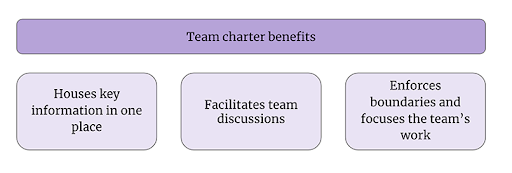Voice of the customer (VOC) is a key initiative to increase customer experience by delivering features that customers need. Customer happiness is a product manager’s fuel, daily motivation, and priority.
In my company, we have a motto that says “Our most unhappy customers are our greatest resource for learning.” Even if you ask and listen to your customers, you may still make them upset — but it’s not the end of the world. We will learn from our mistakes and continue to build on customer needs until we see happy faces 😊
Table of contents
What is the voice of the customer?
Voice of the customer (VOC) is a method for customers’ behaviors, preferences, and needs. VOC is mostly used before starting any new activities. Its goal is to understand expectations and preferences earlier, though we should not care about customers’ needs only for a new process. It should be a daily routine to ask, analyze and learn from them.
VOC helps ensure that customer requests are valuable and creates a competitive advantage by offering a better customer experience. It also helps visualize customer requests and needs. VOC can help you identify what customers have requested and what they really want.
Key components of VOC
To create a basic VOC program, you should at least apply these five steps:
Only asking questions or collecting reviews does not give us a result. Our goal is to find an applicable journey to each type of customer. Our VOC is considered sufficient when we observe a positive impact on the chosen customer group throughout their journey.
Objective
This is the motivation of your VOC — why you want to collect customer needs or what you want to learn from customers in the first place. Without an objective, don’t bother to start a VOC program. You’ll never know what to do or how you can help your company with the data you collected.
An example of an objective is to find out why the daily active user count is constantly decreasing or what the customer’s opinion about the newly released feature is.
Selecting the best method
Next, pick the best method to collect data for your objective. You can select NPS, real-time surveys, tools to collect feedback, and more.
Collecting data
This is where you start gathering customers’ behavior or requests. You can do this in one of two ways, via direct and indirect data.
Direct data is what customers request directly — what they really say. This includes social media, forums, interviews, and NPS.
Indirect data can be collected with tools, market research, and internal team reports (support, customer experience, sales, etc.) LogRocket, Qualtrics, Typeform, Podium, and Qualaroo are all examples of tools where you can hear your customers’ pain points. There are lots of applications you can use, so you can decide according to your objective.
Analyzing data to make personas
This is the hardest part. You may collect thousands of comments worth of feedback, as well as different ideas and requests. Finding the real pain point and focusing on the right topic will be challenging.
I suggest you build a team to help you analyze the feedback you receive so you can be sure that your analysis is not biased. You should be careful and intentional about creating personas while grouping data accordingly. Request differentiation can be caused by different personas. You should group the feedback by considering your segmentation.
Creating a journey
This is the solution we create for our objective based on the data we collect. Every journey we create fits the mold for a selected persona (customer group). As we stated in the problem, we should already know the problematic parts of the journey. We can group our feedback, reviews, and customer survey results to create a better way to help our customers.
Releasing a new journey is not an end here, though. It is a never-ending process! ♾️
We should monitor the results and compare metrics. If you can say the process is going better than before, then you can continue improving it with new methods.
Let’s start with stating a problem and see how a journey goes. We assume that our newly-created page’s usage metrics are not going as we expected. We went through the process I shared earlier and saw that users in the age group of 40 and older are not clicking the buttons as we planned.
After the analysis, we can try A/B testing according to the data we collected. Button locations, naming, and lines can be changed and shown to selected personas. To support this thesis, we can create a funnel analysis flow in our analytics tool, such as LogRocket or Google Analytics:
Then we start to follow the flow of the options we created. The best journey can be selected from there. The time we want to wait to analyze the results depends on the process or product. For example, we may prefer to wait a maximum of two weeks.
We should continue until we find success in our journeys. Meanwhile, we should continue collecting customer feedback. Only monitoring is not enough, as you can understand from everything we’ve talked about so far.
The new journey should create a better experience for users. The user group that we saw had a problem and is not having the same problem anymore. The metrics are increasing as expected with new features.
New journeys can do things like hide unnecessary features for specific roles and personas, create new tooltips, completely change the UI, etc. The important thing is to seek the right output and you can measure it with profit and ROI. As I said, it is a never-ending process, so you should make necessary revisions until you see the right output.
The right output for our example is making the 40 and older user group open the new page in the right flow (or maybe just opening the page is enough to start 🙂). The journey follow-up depends on the problem itself. Please be careful about deciding on your expected output while stating your problem. It will make your journey follow-up easier.
Subscribe to our product management newsletter
Get articles like this to your inbox
Why implement a voice of the customer program?
If you want to become successful as a company, you should listen to your customers. You can see that the best companies’ common points are their focus on customer needs.
Think for yourself — what is the first thing you do before you buy a product? For example, I check the forums and websites for other customers’ feedback. Each negative review means I most probably will not buy that particular product.
According to Qualtrics XM Institutes 2020 research, 94 percent of users prefer to buy from the company that has the highest NPS score (or, on most websites, comments and stars out of a five-point scale). Increasing your customer base is not all you can gain with a VOC strategy. You will improve customer experience by:
- Delivering on-point solutions according to customer needs
- Providing your product or services to the right group of people (personas, specific groups, or demographics)
- Acting according to pain points and preventing potential problems before they occur
- Increasing customer trust and, in return, gaining customer retention
- Learning new service options, product ideas, and integration needs from your customers (you can create a new roadmap with shiny new feature ideas)
Ways to collect data for your VOC program
As I said earlier, you need an objective to start, so I assume you had one motivation to apply a VOC to your product in the first place. We can group the types of VOC techniques according to their ways to collect data as below:
Customer interviews
Customer interviews can be sub-grouped as by phone, online, or in-person. It is the most traditional (and also my favorite) technique for asking customers their feelings on any topic. In-person interviews are such a time-consuming and expensive method for big companies. so phone and online versions are often enough for collecting ideas.
After COVID, Zoom and other video call applications usage increased exponentially. We can take advantage of that and arrange video calls with our target group.
Customer surveys
Customer surveys do not require a person to hold a conversation. You can send customer surveys through email, a feedback form, and more.
There is one thing that irritates me about this kind of method, though, and it’s that we cannot understand if customers are interested in the topic or not. For interviews, I can see the flow from their responses, change the type of questions, or skip some of them entirely.
You should be careful when you set the question list and customer groups accordingly before using surveys as a method. Short question sets are important to intimidate customers as well.
You can categorize your question sets according to their types, such as multiple-choice, drop-down, and open-ended questions. Tools you can use for this method include Google Forms, HubSpot, Medallia, InMoment, SurveySparrow, and more.
Live chats
Another common way to collect VOC is by live chats. If you have a live chat option on your website, you’re lucky — you can collect real-time feedback. This method is great for saving your effort for preparing question sets and customer groups.
According to a study, 63 percent of customers are more likely to return to companies that utilize live chats.
Most companies focus on listening to customer complaints and resolving them with live chats. You should not limit yourselves to that — be aware you have an opportunity to collect VOC data directly this way. The data can be used later for preparing surveys for more groups.
Digital behavior and social listening
You can collect data without question sets through website behavior analysis, comment analysis, and your overall online reputation on review websites.
As a software company, you should be careful about your online reviews on websites like Capterra, Trustpilot, or G2. These are vital for many software users to make purchasing decisions. Remember that these websites cannot apply to all types of businesses. of course, so you can evaluate reviews on sites that align with your own company’s industry.
By collecting digital behavior and social data, businesses can easily determine the voice of the customer and place their product accordingly. This is important because studies have shown that 90 percent of customers read reviews before making a purchase, and 70 percent of them check multiple resources before placing an order.
Understanding customer expectations
I mentioned understanding customer expectations as “analyzing” earlier, and in this section, I want to explain it more. The data we collected is raw and does not have any meaning without processing.
First, you should segment your customers according to your product, problem, or need. Segmentation can change according to your product and industry. You can segment by paid vs. free customers, web vs. mobile users, cloud vs. desktop, user roles (operation, seller, or manager), and many more.
User roles and the types of products they use affect their feedback, so segmentation is a required part of our process before selecting the question set and VOC method.
Personas can be shaped after data collection is done. We can group the answer and feedback according to personas like tech geeks, occasional users, addicted users, etc. Personas can create priority for our data groups.
At the end of the day, we will create a journey for each selected persona with our data. The customer journey is a key component in defining features for new requests. We should be careful to provide the correct features to the correct user persona. This is what I mean by understanding the customer experience — every persona is going to have a slightly different experience and you need to cater to that.
For example, adding a complex technical feature for occasional users can create a disaster. They want to use the product as simply as possible and don’t like to get lost inside too many options, unlike tech geeks.
Voice of the customer template
We previously discussed finding the best method and question sets. For those who don’t have a list, I prepared a VOC question template. You can check the stream of topics suitable for your objective and customer segment.
Later, you can start collecting data. Don’t forget that the question set and length of the questions/survey are important. You should be careful about selecting the right questions for the right group.
Conclusion
In summary, common challenges associated with VOC are asking the right question to the right customer segment and providing the right feature to the right persona. Find relevant questions, arrange them in an appropriate length, and match the responses with the relevant persona. Let me know if I can help you! 🎉
Featured image source: IconScout
LogRocket generates product insights that lead to meaningful action
LogRocket identifies friction points in the user experience so you can make informed decisions about product and design changes that must happen to hit your goals.
With LogRocket, you can understand the scope of the issues affecting your product and prioritize the changes that need to be made. LogRocket simplifies workflows by allowing Engineering and Design teams to work from the same data as you, eliminating any confusion about what needs to be done.
Get your teams on the same page — try LogRocket today.
Source link






Leave a Reply